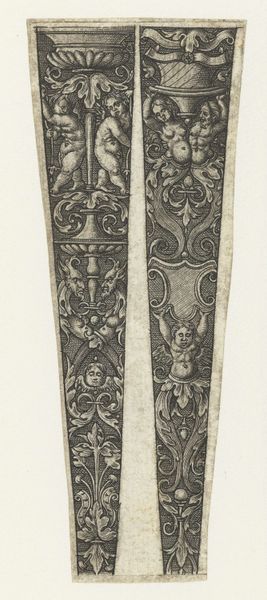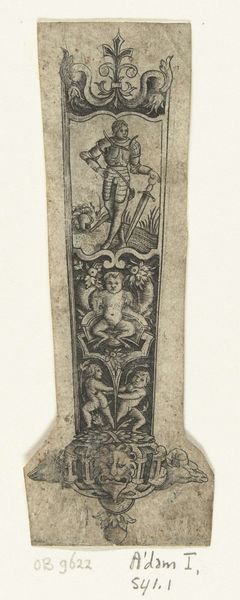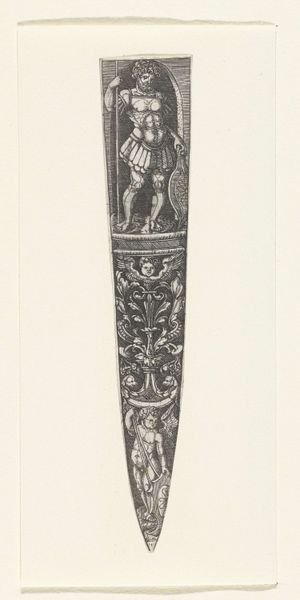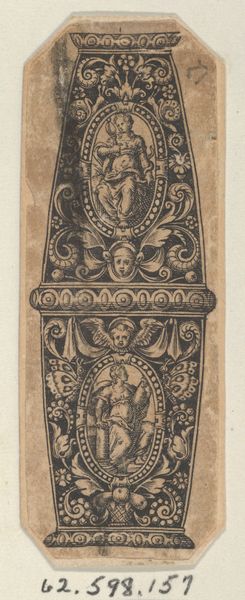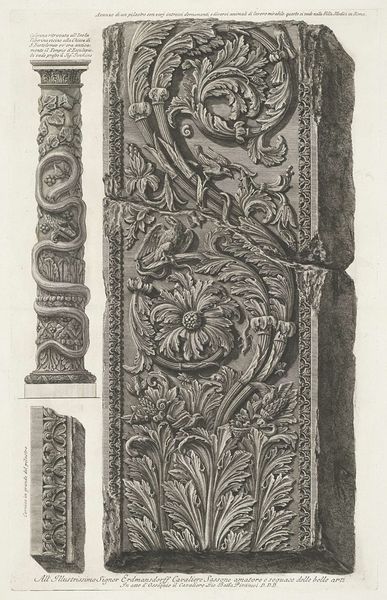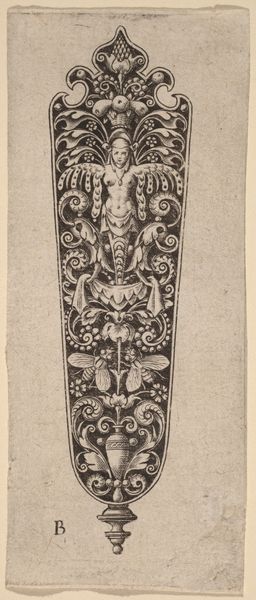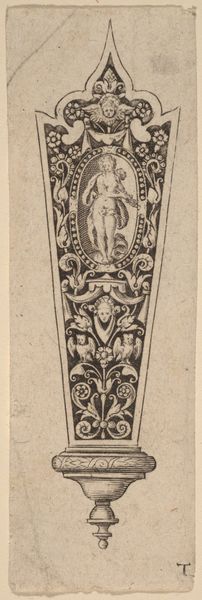
ornament, print, engraving
#
ornament
#
medieval
# print
#
old engraving style
#
line
#
history-painting
#
engraving
Copyright: National Gallery of Art: CC0 1.0
Curator: This print, titled "Ornament for Knife Handle" is attributed to Theodor de Bry. The medium appears to be an engraving. Editor: It has a striking, dark mood for something designed to adorn a knife. It's dense with figures and decoration. Curator: It’s interesting that an everyday object would be decorated in this way, but then knife handles, especially in earlier eras, offered a personal space for the display of iconography, often blending the secular and sacred. We see precisely that here. Note how the engraving depicts Christ’s crucifixion and, below that, a display of ornate botanical and zoomorphic design elements. It reflects both a moment of great historical weight, yet seems meant for practical and ornamental purposes. Editor: The layering of these historical or religious subjects with intricate patterning offers a complex intersection for the art form. Is the knife itself somehow elevated, repurposed through image to perform the work of faith or of power? Curator: Absolutely. Considering Theodor de Bry’s career, it is not surprising to see this intermingling. He made quite a name for himself through his illustrative work documenting the colonization of the Americas. So, here, he’s using the traditional craft of the ornament to participate in the dynamics between Europe and the rest of the world, to portray power through graphic display. In some sense the medium also seems to be acting like an artifact of religious dominance. Editor: And in the small, intimate form of a knife handle. It seems paradoxical: the visual effect relies on the symbolic function. By contrasting brutality, the horror on the cross, with this almost whimsical design on the bottom, what type of person is that designed for? How might the imagery be received now? Curator: Those questions about audience and power resonate now as we re-evaluate such imagery in the context of larger discussions about colonialism and identity, specifically, the problematic aesthetics linked to violence and objectification. It prompts an important discourse, as to what purposes those aestheticized presentations were originally meant to serve. Editor: Indeed, placing this tiny ornament within our larger cultural awareness invites reconsideration about what we consume, literally, and metaphorically, in its representation of past power relations. Curator: Precisely, an object designed for a basic task has transformed into something far more layered.
Comments
No comments
Be the first to comment and join the conversation on the ultimate creative platform.


